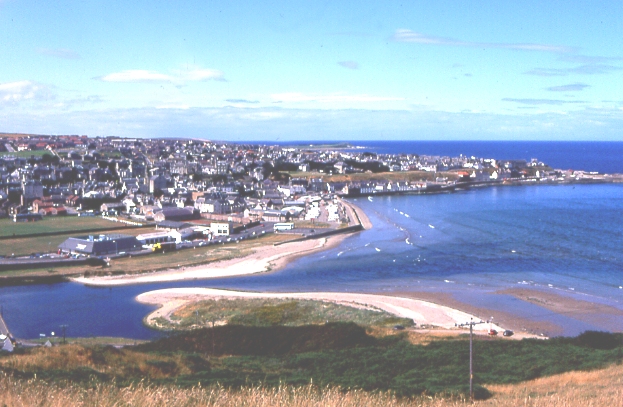The View That Changed

You arrive bursting with excitement, camera in hand, heart pounding at the first glimpse of turquoise waters or snow-capped peaks. But instead of peaceful silence, you’re swept into a sea of voices, selfie sticks, and the constant shuffle of sneakers on ancient stones. The truth is, some of the world’s most breathtaking places now come with a warning whispered by locals: “Please don’t come.” It’s not about shutting doors, but about preserving the magic that made these destinations unforgettable in the first place. The clash between wanderlust and local life is real—and the tension is thick enough to taste on the salty air. Imagine standing on a cliff, hoping for serenity, but instead feeling like you’re at a music festival with everyone jostling for the same view. That’s the modern paradox of travel dreams colliding with reality.
Iceland Beyond the Blue Lagoon

Iceland’s wild beauty is legendary—steaming geysers, thunderous waterfalls, mossy lava fields that look like another planet. But places like the Blue Lagoon and Golden Circle now draw crowds so thick, locals are feeling squeezed out of their own landscapes. In Reykjavík, residents have seen quiet neighborhoods morph into tourist playgrounds almost overnight. If you’re dreaming of Icelandic solitude, try venturing to the Westfjords or the remote Snæfellsnes Peninsula. Here, the air feels crisper, the silence real, and you can spot puffins or soak in geothermal pools without a parade of selfie sticks. **Travel tip: Visit during late spring or early autumn for fewer crowds and a better chance of seeing the Northern Lights.** Icelanders are proud of their home—they’re just asking visitors to tread gently and leave the moss undisturbed.
Amalfi Coast Overwhelmed

In Amalfi, the lemon-scented air and pastel villages stacked on cliffs once felt like a secret. Now, winding coastal roads choke with traffic, and locals dodge lines of visitors snapping photos outside every trattoria. Residents in towns like Positano and Amalfi often feel like extras in a movie set built for someone else’s vacation. If you want the real Italy, try the smaller towns of Ravello or Praiano, where grandmas still press fresh pasta behind tiny windows and the sea sparkles just for you. **The shoulder seasons—May or late September—bring fewer crowds and a softer, golden light.** Locals want you to fall in love with their coast, but they hope you’ll do it quietly, with respect for the fragile cliffs and the rhythms of everyday life.
Santorini Searching for Silence

Santorini’s sunsets are legendary, a swirl of orange and pink over white-washed domes. But the postcard perfection has a price: narrow lanes in Oia and Fira jammed with tourists, cruise ships turning up by the thousands. Locals sometimes struggle to get groceries or simply walk their own streets. They whisper about Pyrgos and Megalochori, villages where you can sip strong coffee at sunrise or wander cobblestone alleys in peace. Here, the scent of bougainvillea fills the air, and you might share a meal with a fisherman instead of a tour group. **Late September or October is a sweet spot—warm enough for a swim, cool enough for walks, and blissfully quieter.** For those who want the real Santorini, the invitation is simple: look beyond the obvious, tread lightly, and leave space for the island to breathe.
Kyoto’s Quiet Corners

Kyoto’s bamboo forests and golden temples cast a spell, but the city’s ancient calm is being tested. During cherry blossom season, crowds flood the Philosopher’s Path, and geisha districts fill with eager photographers. Locals sometimes post signs asking visitors not to follow geisha or block their way. The real magic is found in early mornings or in quieter neighborhoods like Uji, famous for its green tea, or the mossy Saiho-ji Temple. The rustle of bamboo, the hush of a rock garden, the aroma of fresh mochi—these are Kyoto’s gifts to those who slow down. **Spring and autumn are the most beautiful, but late November’s fiery leaves are less crowded.** If you’re ready to be a thoughtful guest, Kyoto will reward you with memories far richer than any souvenir.
Venice Flooded With Feet

Venice is a dream—gondolas gliding beneath ancient bridges, the soft slap of water against stone. But the romance is fading as locals are outnumbered by tourists, especially in summer. Some Venetians have posted signs: “Venice is not Disneyland.” The city’s narrow lanes can’t cope with the tidal wave of visitors, and the cost of living pushes families out. Locals point travelers to Cannaregio or Giudecca, where life moves slower and café tables are filled with laughter, not just cameras. **Visit in February or November for misty mornings and empty squares.** Venice is a living city, not just a backdrop—travelers who remember that will find magic the crowds can’t touch.
Barcelona’s Barrio Backlash

Barcelona’s sun-drenched streets and Gaudí mosaics are irresistible, but the city’s heart is heavy. Residents in the Gothic Quarter and Barceloneta have watched rents climb and daily life turn into a circus. Graffiti appears: “Tourists go home.” The Ramblas are packed, but step into Gràcia, and you’ll find locals sharing tapas in tiny squares or dancing during street festivals. **Aim for mid-March or late October when the pace is gentler.** Respect local siesta hours, and don’t expect every corner to be a photo op. Barcelona wants you to fall in love, but on its own terms.
Dubrovnik Beyond the Walls

Dubrovnik’s medieval walls glow golden at sunset, but the old city groans under the weight of cruise ship crowds. Locals often avoid the main gates during peak hours, and some have even moved away. If you want a more genuine taste of Croatia, wander outside the walls to Lapad or Gruž, where fish markets buzz at dawn and the Adriatic sparkles without the constant click of cameras. **Early June or late September are ideal—warm, but less frantic.** Dubrovnik is a treasure, and locals hope visitors will cherish it enough to help protect it.
Banff’s Wild Balance

Banff’s crystal lakes and mountain peaks look untouched, but park rangers and locals know better. Summer brings traffic jams in places that once belonged to elk and grizzlies. Some hiking trails are worn thin, and parking lots overflow. If you crave wilderness, try Kananaskis or Yoho—less famous, just as jaw-dropping. **Visit mid-September for golden larch trees and fewer crowds.** Locals urge travelers to follow Leave No Trace rules: pack out what you pack in, and keep a respectful distance from wildlife. Canada’s Rockies are epic, but they’re also fragile.
Responsible Wanderlust

Travel isn’t just about ticking boxes or chasing Instagram likes—it’s about connection, discovery, and respect. Locals in these scenic spots aren’t anti-tourist. They just want their homes to stay beautiful, their traditions alive, their children able to walk the streets without dodging tour groups. **Support local businesses, learn a few words of the language, and always ask before snapping photos of people.** The best travelers are good listeners—pay attention to what locals say, and you’ll experience more than any guidebook can promise.
Slow Down and Savor

Maybe the greatest travel hack is this: slow down. Instead of racing from landmark to landmark, linger in a café, chat with a shopkeeper, or simply sit and watch the world go by. The best stories come from little moments—a shared meal, a sudden rainstorm, the quiet hush after the crowds have gone. **Choose one place and really get to know it.** Locals everywhere will tell you: it’s the slow travelers who leave the kindest footprints.






